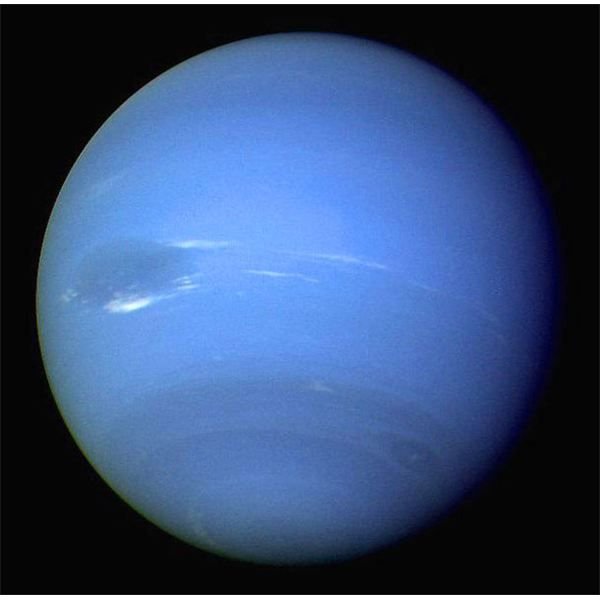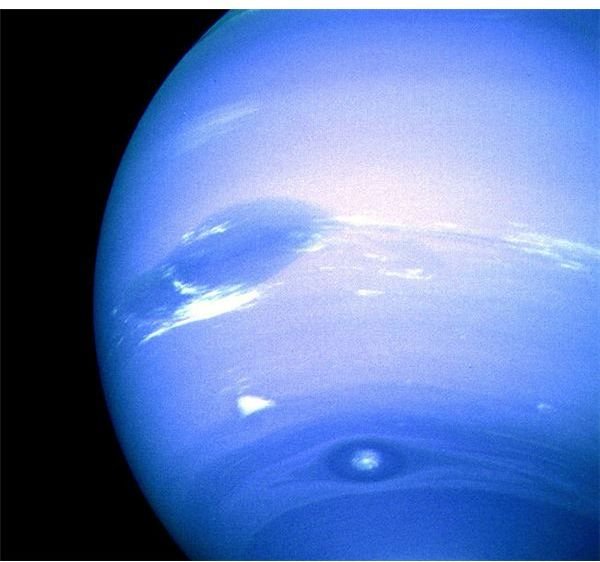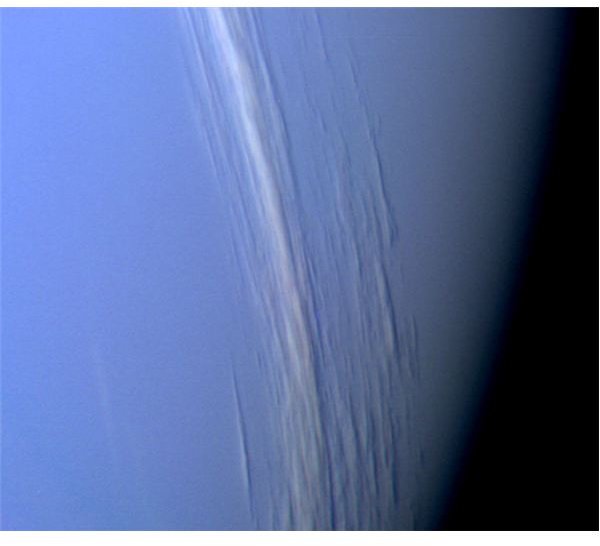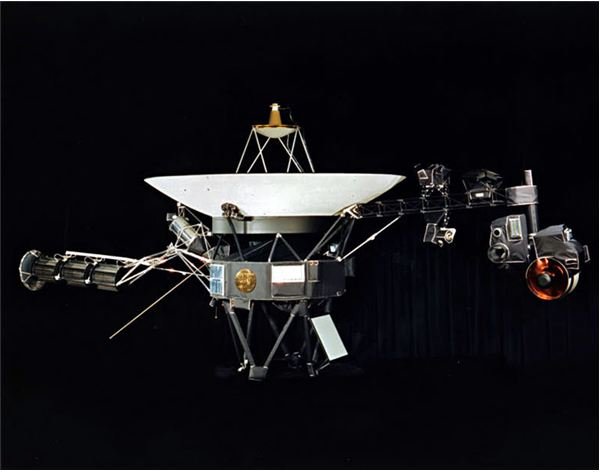About Neptune Winds - Responsible for the Great Dark Spot and the Scooter Cloud as Observed by Voyager 2 and the Hubble Space Telescope
Voyager Flyby
Most of the knowledge we have about Neptune’s weather patterns are due to the observations of the Voyager 2 spacecraft as it passed by the planet in 1989. The information provided by Voyager 2 showed that Neptune has a dynamic weather system. Neptune, the outermost planet in the solar system, among the gas giants is shrouded in cold clouds ranging in temperatures from -240 degrees Fahrenheit to -330 degrees Fahrenheit. The environment of Neptune is turbulent with strong gravity, extreme temperatures and high pressure. Neptune winds are one of the most prevalent features of this environment.
Wind Speeds

The fastest winds in the solar system are found on Neptune. Wind speeds can reach 450 meters per second. Neptune winds are four times faster than the fastest tornado recorded on Earth. Most of the winds on Neptune blow westward, opposite of the rotation of the planet. At the equatorial regions of Neptune the winds are in excess of 700 miles per hour.
The Great Dark Spot

The Voyager II spacecraft observed what was believed to be a hurricane-like storm the size of Earth on Neptune. Similar to Jupiter’s Great Red Spot, it was dubbed the Great Dark Spot. Winds near the area of the Great Dark Spot blow at speeds up to 1,200 to 1,500 miles per hour. Although the anomaly was first thought to be a storm, it later seemed to be a hole in the methane cloud deck, however, the disappearance of the Great Dark Spot strengthened the original assumption of a cyclonic storm. Later images from the Hubble Space Telescope showed no sign of the Great Dark Spot. In 1994, a similar spot appeared in the northern hemisphere of Neptune but also later disappeared. The disappearance of these spots and subsequent appearance of others seems to indicate that the storms on Neptune do not last as long as those on Jupiter.
Scooter

Another interesting feature of Neptune is a rapidly moving cloud nicknamed Scooter. Voyager 2 observed bright cirrus clouds circling the planet. Scooter is one of those clouds. It is a small, irregular white cloud that moves around Neptune approximately every 16 hours. Scooter may be a plume from lower in the atmosphere although it is uncertain.
The Weather on Neptune
We know that the weather patterns on Neptune are turbulent and the atmosphere changes rapidly, but what is the driving force behind these patterns? Although there are no concrete answers as of yet, there are several possible contributing factors. Although it is far from the Sun, Neptune has an internal heat source and radiates twice the amount of energy it receives from the Sun. The rising heat from deep in the low cloud decks is likely to affect the weather patterns on Neptune. The weather is also likely to be affected by other factors such as Neptune’s thick atmosphere and rapid rotation. If you want to imagine the weather on Neptune, just keep in mind that the winds produced in the most severe tornado and hurricanes here on Earth don’t even compare to the typical winds of Neptune.
References
Views of the Solar System: Neptune - https://solarviews.com/eng/neptune.htm
Smith, Bradford A. “Neptune.” World Book Online Reference Center. 2004. World Book, Inc. - https://www.nasa.gov/worldbook/neptune_worldbook.html
The Interactive Library: The Solar System: The Planet Neptune - https://www.edinformatics.com/math_science/solar_system/neptune.htm
NASA: Jet Propulsion Laboratory: Voyager: The Interstellar Mission: Neptune - https://voyager.jpl.nasa.gov/science/neptune_neptune.html
Image Sources
Voyager. (Supplied by NASA; Public Domain; https://upload.wikimedia.org/wikipedia/commons/d/d2/Voyager.jpg)
Neptune. (Supplied by NASA; Public Domain; https://upload.wikimedia.org/wikipedia/commons/0/06/Neptune.jpg)
Neptune Storms. (Supplied by NASA; Public Domain; https://upload.wikimedia.org/wikipedia/commons/8/8c/Neptune_storms.jpg)
Neptune Clouds. (Supplied by NASA; Public Domain; https://upload.wikimedia.org/wikipedia/commons/c/c8/Neptune_clouds.jpg)
